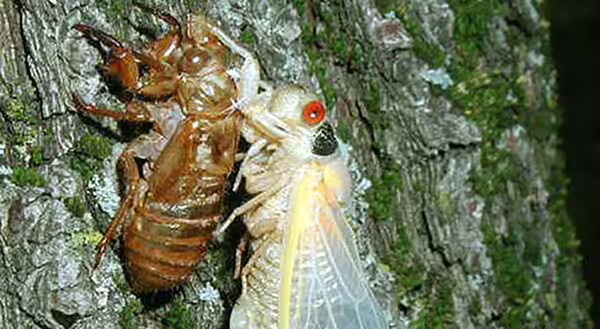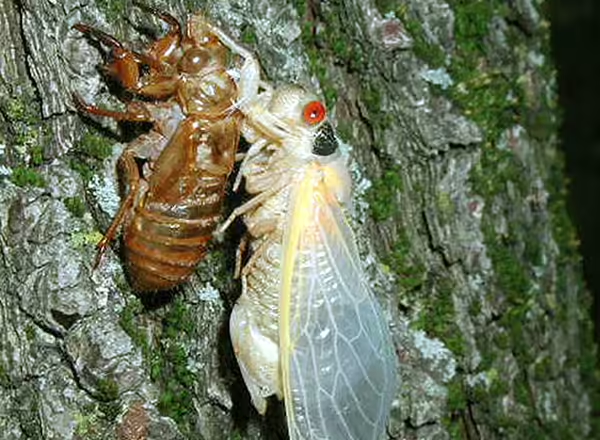
Illinois will experience the co-emergence of two broods of periodical cicadas in 2024, the 13-year Great Southern Brood (XIX) and the 17-year Northern Illinois Brood (XIII). For the most part, the two brood ranges are not expected to overlap but together much of the state’s inhabitants will be hearing their song sometime in May. So, get ready for some noise.
For commercial specialty crop production, we tend to focus on the potential damage a large population of female periodical cicadas could inflict during the egg-laying process, especially on young apple trees with smooth branches about 3/16" to 7/16" in diameter. But let’s switch gears and consider their nutritive food value (high-protein, low-fat). Several animal species are known to have changed their foraging habits to benefit from the superabundance of a periodical cicada emergence…including culinarily adventurous humans.
When cicada nymphs come up out of the ground, they climb up the nearest tree or other tall structure and shed their skin. This is when you want to harvest them, fresh out of their nymphal skin, and still soft and milky-white. There are several published cookbooks, as well as a ton of information on the web related to harvest, storage, and cooking with periodical cicadas; but the upshot is you will need to freeze them overnight to humanely kill them before next removing their head, wings, and sometimes legs ahead of culinary use or re-freezing. By all accounts, the female periodical cicadas are meatier compared to the males, so are the preferred choice when harvesting if possible. The tip of the female’s abdomen is more sharply pointed compared to the male’s more dome-shaped abdominal tip but making that distinction at the time of harvest may be easier said than done. If you do harvest males, just expect them to shrivel significantly more in the cooking process.
Personally, I have never been so happy to have a shellfish allergy! It seems the majority of people allergic to shellfish are allergic to tropomyosin, a protein that is also found in many insects. So, to be on the safe side, you should not sample recipes that include periodical cicadas if you have a shellfish allergy. As such, cicadas should also be treated as you would any other potential allergen when preparing food for the public.
